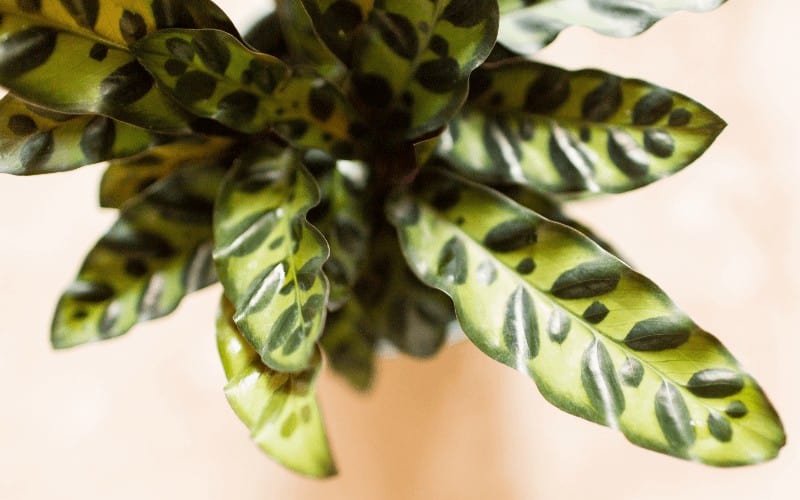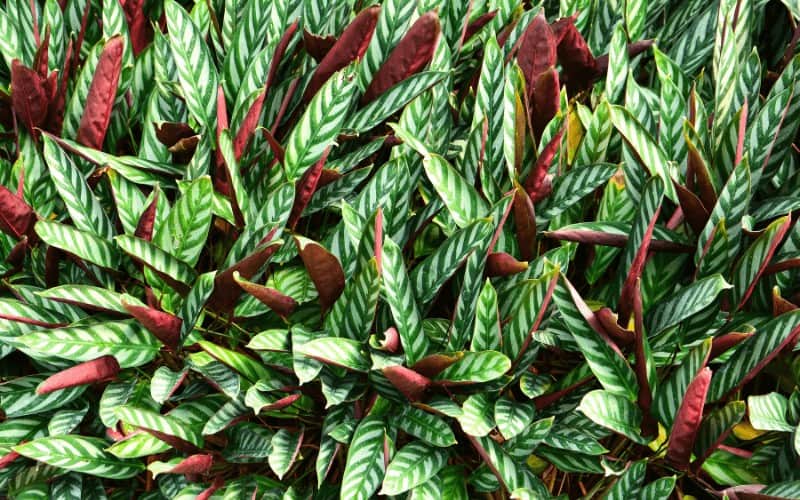Although most people would not prefer the calathea plant, the said plant has bought its way into the house and businesses of many people since it does well indoors due to its species.
And just like every other plant, this plant requires attention for it to bloom and be appealing to the places it is kept.
If for whatever reason, your calathea plant is dying, you don't need to fret over it as we're going to show you how to save a dying calathea pant shortly.
Table of Contents
Symptoms Of a Dying Calathea Plant
If you are skeptical about your calathea plant’s growth and cannot afford to take any chances, check for the stems.
The stems of a healthy plant should be firm and have a green cast on the inside, but if the stem is mushy, check the roots for the same conditions.
Additionally, to know a healthy calathea, calathea would slowly turn its leaves to expose itself to the rays of sunshine, and an unhealthy calathea would curl its leaves in distress when exposed to the above factors.
Can you bring calathea back to life?
Surprisingly, yes you can! Some plants might not produce positive results once you do not take good care of them and calathea is not exceptional.
Nonetheless, calathea plants could be extremely forgiving and magically grow back lost leaves, but why allow it to die at first or put it to test while you can enjoy its growth too.
Calathea would crown your efforts by growing rapidly and producing endless leaves.
Why Your Calathea Plant Is Dying

So many factors could lead to your calathea plants dying, your plant might be exposed to one or two of these factors unintentionally.
1. Overwatering and underwatering
The leaves wither because of overwatering. If your calathea is over-watered, it renders it powerless and it wouldn’t produce nutrients.
On the flip side, if you do not water your calathea, it loses the strength and eventually its ability to grow. Also, when you water your plants with poor quality water, it would turn brown and look unhealthy.
2. Temperature
Exposing your calathea plant to cold weather renders your plant susceptible to damage because the calathea plant doesn’t thrive well under extreme cold conditions.
3. Direct sunlight
This is one of the major factors that would leave the plants on the verge of dying, in as much as they love light, calathea prefers indirect sunlight to direct sunlight.
Calathea is most seen in tropical areas and is located under other trees where they receive limited light.
Note: Extreme hot temperatures cause the plant to curl in distress. So, it’s best to maintain a temperature balance when growing theh calathea plant.
4. Fertilizing
Over-fertilizing your calathea may stunt its growth. The calathea doesn’t need a lot of fertilizing still they would do well with standard houseplant fertilizer during spring, summer, and fall.
They especially need fertilization during periods of growth and flowering.
5. Pests
Pests are rarely attracted to calathea but other pests that could feast on them are spider mites, mealybugs.
How to Save a Dying Calathea Plant
As problems arise; possible solutions arise with it, you do not have to beat yourself in guilt as something can still be done.
Here's how to save a dying calathea plant:
- Do not over-water your calathea plant nor ignore it, do well to water it when needed. Using distilled water or water that has been purified in some way to water calathea plants can help in their growth.
- Do not expose your calathea to the cold weather, it kills the plant.
- Direct sunlight: Your dying calathea does not need direct sunlight. What happens when they get direct sunlight? It would practically burn and shrink the leaves of your calathea plant and cause it to lose vibrant colors.
- Fertilize your calathea every three weeks with high nitrogen foliar fertilizer in spring through summer and monthly through fall and winter would strengthen your plant.
Different Varieties of Calathea Plant

More common names associated with the calathea plants are; cathedral plants, peacock plants, zebra plants, rattlesnakes, and prayer-plants.
The varieties include; calathea orbifolia which has a large silvery-green leaf with thick dark-colored veins.
The calathea ornata with large dark green glossy leaves and striking white or pink stripes. These plants and their attractive nature lighten up the room. If you have them, count yourself lucky!
Others are calathea roseopicta also known as the rose-painted calathea, with its dark green and pink leaves, it lightens up the environment where it is kept and it grows about 50 cm.
Calathea makoyana also known as peacock plant bears contrasting green and purplish red-leaves.
Calathea rufibarba is a flowering plant, the leaves are soft, with species not as bright as the others.
How To Ensure Healthy Growth Of Calathea Plant
Calathea grows slightly in acidic soil, ensure to plant them in well-draining soil mixed with peat and other organic properties.
However, calathea is best grown in a more humid environment. So, you can maintain its humidity by spraying water, that way the leaves don’t get too dry.
Note: you only have to water consistently and not constantly, so your plant would grow a little fast. You may ask, a little fast? Well, here’s why,
The calathea has been known to grow moderately fast because of its species. So do not move a flinch when you feel its growth is not encouraging or relatively very slow.
Other ways to ensure a healthy calathea plant growth include:
Pruning
It might suffice to say that calathea requires less pruning, yes other than the removal of brown or yellowed leaves.
Still, pruning old and faded blooms improves your calathea’s appearance and redirects its energy into producing foliage.
Though their blooms might seem unnoticeable, regular pruning gives your plant the strength to grow well and look appealing.
Allow the surface of your plant to dry out and then water it again. Leaves dropping out of the branches could be a result of your calathea plant being thirsty.
Do not ignore the signs. However, you can still feel the soil texture using a soil moisture meter before you decipher what to and what not to do.
Related Posts:
- Maranta Vs Calathea
- How To Save a Dying Queen Palm Tree
- How to Revive a Dying Blueberry Plant
- How To Revive a Dying Oak Tree
- How To Kill Fungal Disease On Palm Trees
Conclusion
Growing plants generally demands a lot of care from the gardener and calathea is no exception.
If by any chance you’ve done something contrary with an adverse effect on your plant, not to worry its forgiving nature would allow you to grow it back.
These tips would do great in saving your calathea. Have a blissful experience saving that calathea!




